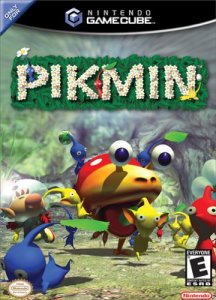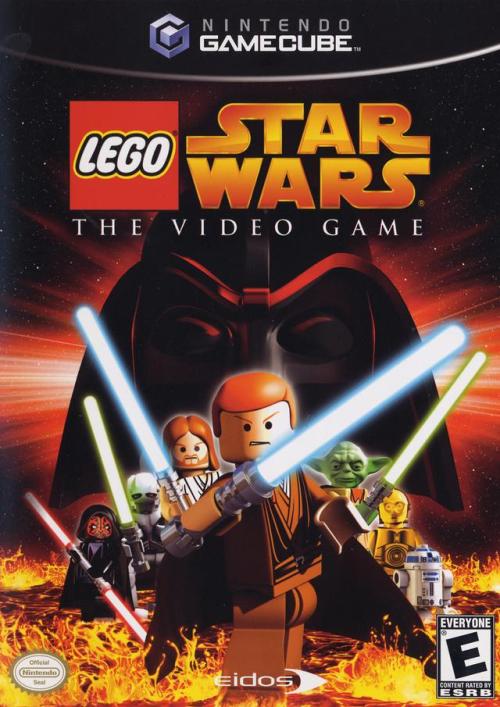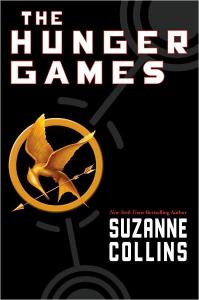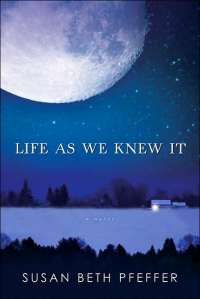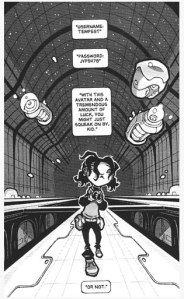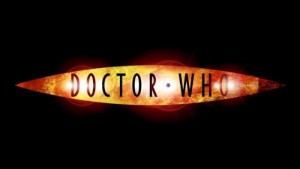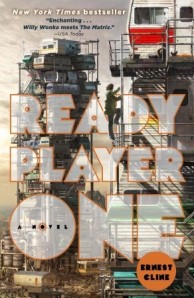
Ready Player One
By Ernest Cline
ISBN: 9780307887443
Publisher: Crown Publishing Group
Date of Publication: 2011
Reader’s Annotation:
In the year 2044, orphaned Wade Watts has found a clue that could change everything in the OASIS gaming system.
Plot Summary:
Wade Watts is an orphan who lives in the stacks. He spends the majority of his day plugged into the OASIS, an extensive online simulation. The OASIS is were Wade can access games and his classroom. The only friends Wade has exist within the OASIS, where identity is created by the user.
The year is 2044 and the world is in ruin. The poor economy has taken a toll on the world and the majority of its citizens suffer in vain. Food and other resources are scarce, which is why more people plug into the OASIS as a means to escape.
At the time of his death, OASIS co-creator James Halliday was a lonely man who left no heirs to his empire. Instead, he left instructions that his legacy would be inherited by the winner of a game by Halliday’s design. Unfortunately, the rush to find the pieces of the game, or the Easter Eggs, produced nothing. Egg Hunters, or Gunters, now devote their time learning everything about Halliday’s past times in order to find clues towards Halliday’s fortune.
Years go by without any progress. Until one day, when Wade Watts stumbles onto an unexpected clue, and changes everything. And as Wade unlocks that first clue, he discovers that there are others out there that will do anything to win the contest.
Anything.
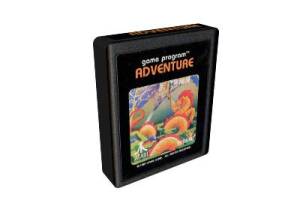
Critical Evaluation:
A love letter to the 1980s and nerd culture, Ernest Cline’s first novel is a pop culture fanatic’s dream. Cline has created a fun world, despite the various economic hardships endured by the characters. Such examples of financial ruin are more likely inspired by the poor economic conditions of the past five or more years. Cline’s insight into entertainment and economics almost seems prophetic as more humans plug into the Internet for their news and social interaction.
But towards the middle of the book, the story seems to falter. It’s as if Cline was confused as to how he could bridge the story’s enticing beginning with the exciting ending. Even with audio narration by Wil Weation, the story moves at a slower pace with too much explanation and not enough action. Pop culture fans will still push through, enjoying the heavy references. At times the various cultural references seem too much for those unfamiliar with the different historical materials. Cline’s strength as a reader is that he endeavors to explain such history with patience and ease.
The novel’s many video game references are a great selling point to reluctant readers who prefer video gaming. Interested readers might go beyond the book to seek the materials in the book. The book’s Wikipedia page provides a great list of all the different cultural references mentioned.
Audio Evaluation:
Wil Wheaton, Weasley Crusher on Star Trek: The Next Generation, provides the audio narration for Ready Player One. A profiic member of modern geek and nerd culture, it seems fitting that Wheaton should be the one narrating Wade’s tale. The audiobook is a delight as it seems that Wheaton genuinely enjoys the material. Unfortunately, the problems with the second act of the book is not diminished withe Wheaton’s narration. He still gives the story his full attention and the audience might be inclined to forgive Cline’s offensive with Wheaton’s devotion to the material.
Information about the Author:
Ernest Cline’s webpage is more of a fun, nerdy slideshow. What visitor’s to the page can discover is that Cline’s background has been soaked in science fiction and video games. His love of Science Fiction/Fantasy films led him to become a screenwriter. Cline’s obsession with Star Wars led him to write the screenplay that would eventually become the film Fanboys.
Ready Player One is Cline’s first novel and continues to be amazed by the novel’s success. Cline has continued to cultivate his love of the 80s pop culture. His most recent book tour involved traveling from each location in a Delorean automobile, similar to the one used in the film trilogy Back to the Future.

(Ernest Cline and Wil Weaton with a Delorean)
Genre:
Science Fiction
Curriculum Ties:
Popular Culture History, Future of Technology, History of Video Games
Booktalking Ideas:
What is your favorite video game and why?
What is the role of social networking and internet use in your life? Personal and professional?
Reading Level/Interest Age:
This is a crossover title in that it was written for an adult audience but does have mass appeal for younger readers. The novel would be recommended for a 16 and up audience. The book was a 2012 Alex Award winner. The Alex Award is given to adult written books that have young adult appeal.
Challenging Issues:
There are no current challenges for this book. The American Library Association’s Guide to Library Materials Challenges is a great resource if the book is challenged in the future.
Potential issues would include violent situations.
Why did I include this book in the title selections?
Ernest Cline’s book is a treat for anyone who has any awareness of popular culture history, specifically history from the 1980s. As a child of the 80s, much of the material presented were relevant to my upbringing. The story is not condescending to those readers who lack previous popular culture knowledge and does explain situations and history in a manner that will excite readers to explore more about nerd culture after they finish the book. This is a great book to use for those reluctant readers who prefer video gaming to recreational reading.
Reference:
YALSA. (2012). Alex Awards. Young Adult Library Services Association. Retrieved from http://www.ala.org/yalsa/alex-awards
Cline, E. (2012). About Ernie. Ernest Cline. Retrieved from http://www.ernestcline.com/blog/about/
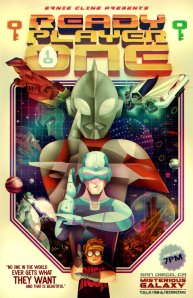
Read Full Post »
